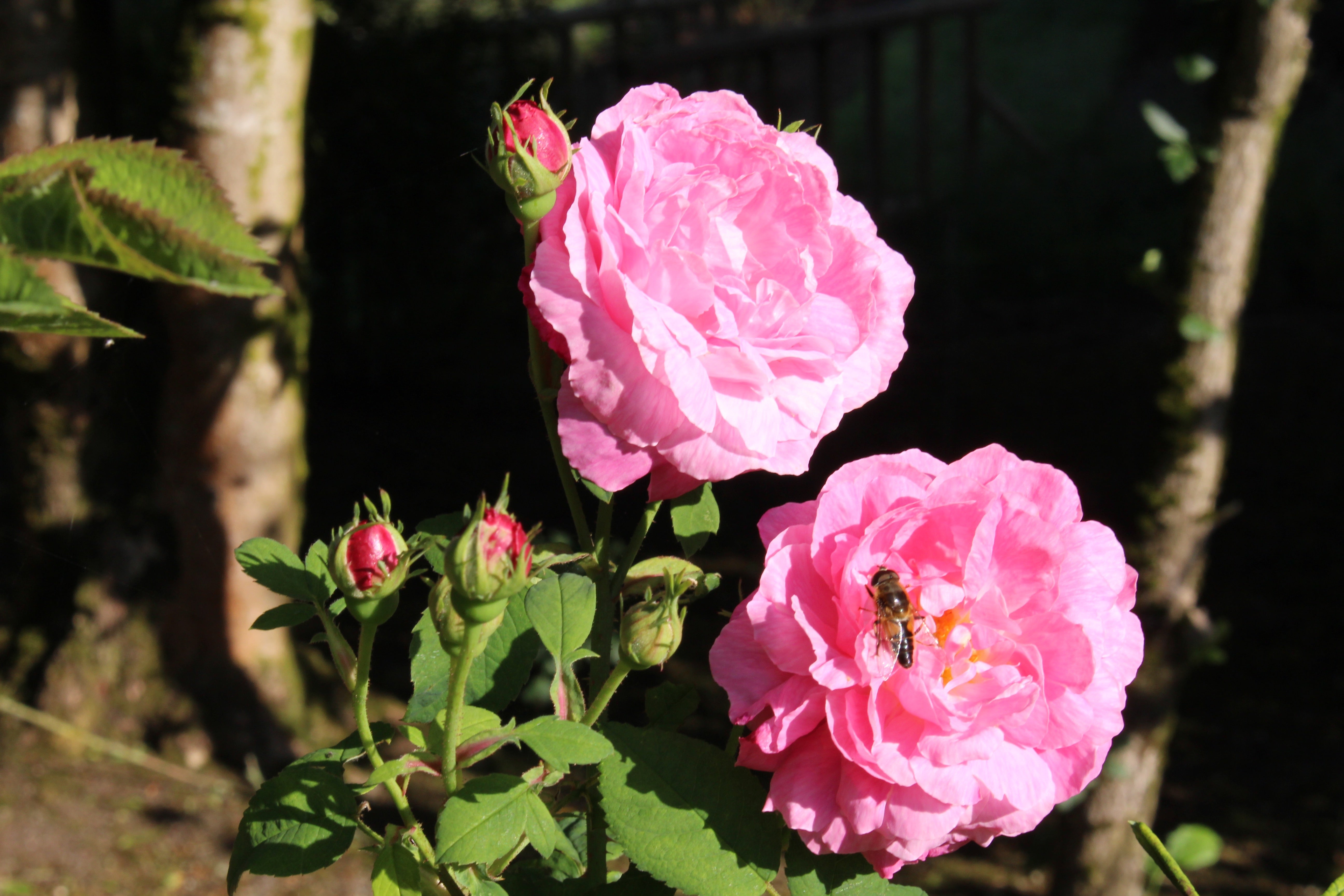Rosa 'Gloire des Mousseuses' (CeMo)
Approx. 0.5 litre pot
About this cultivar:
Rosa 'Gloire des Mousseuses' (CeMo) produces large, fully double, pink flowers that bloom in clusters throughout the growing season and fade in colour as they age. The blooms have a strong, sweet fragrance, and are held on long, straight stems. The dark green foliage provides a nice contrast to the blooms.
This cultivar is suitable for a variety of garden styles and can be planted in borders, as a hedge, or as a specimen plant. It is also quite disease-resistant.
'Gloire des Mousseuses' was introduced by Laffay, in 1852. Jean Laffay (1795-1878) was a renowned French breeder of Hybrid Perpetual roses and a pioneer in developing hardy and repeat-flowering varieties. Starting as a gardener, Laffay's true passion became hybridizing roses. Many of his exceptional cultivars are still highly sought after and widely grown today.
- Position: Full sun, partial shade
- Soil: Almost any soil, grows well in Ballyrobert
- Flowers: June, July, August, September
- Other features: --
- Hardiness: H6 - Hardy in all of UK and northern Europe (-20 to -15°C), Fully hardy, grows well in Ballyrobert
- Habit: Bushy
- Foliage: Deciduous
- Height: 90 - 150 cm (3 - 5 ft) prune to your liking
- Spread: 90 - 150 cm (3 - 5 ft) prune to your liking
- Time to full growth: 2 to 5 years
- Plant type: Shrub, rose
- Colour: Green, pink
- Goes well with: Aster, Geranium
About this genus:
Rosa is a woody perennial within the Rose family (Rosaceae). What is there to say? There are over 100 species and thousands of cultivars. They form a group of plants that can be erect shrubs, climbing or trailing with stems that are often armed with sharp prickles. Flowers vary in size and shape and are usually large and showy, in colours ranging from white through yellows and reds. Most species are native to Asia, with smaller numbers native to Europe, North America, and northwest Africa.
The name rose comes from French, itself from Latin rosa, which was perhaps borrowed from the Greek ródon. The ancient Greeks and Romans identified the rose with the goddess of love, Aphrodite (Greek name) and Venus (Roman name). In Rome a wild rose would be placed on the door of a room where secret or confidential matters were discussed. The phrase sub rosa, or "under the rose", means to keep a secret — derived from this ancient Roman practice.
The aggregate fruit of the rose is a berry-like structure called a rose hip. Rose hips are occasionally made into jam, jelly, marmalade, and soup or are brewed for tea, primarily for their high vitamin C content. They are also pressed and filtered to make rose hip syrup. Many Rosa cultivars do not produce hips, as the flowers are so tightly petalled that they do not provide access for pollination. Poor little bees. Rose perfumes are made from rose oil, which is a mixture of volatile essential oils obtained by steam distilling the crushed petals of roses. About two thousand flowers are required to produce one gram of oil! Rose petals also have a variety of culinary uses; from teas to salads and scones to ice creams
Ornamental roses have been cultivated for millennia, with the earliest known cultivation known to date from at least 500 BC in Mediterranean countries, Persia, and China. In the early 19th century the Empress Josephine of France patronized the development of rose breeding at her gardens at Malmaison. As long ago as 1840 a collection numbering over one thousand different cultivars was recorded at Abney Park in England.
As you may have guessed it is hard to be general about growing Roses. However, rest assured that all the roses we sell have been trialled and grown in our own wet clay soil garden at Ballyrobert in either full-sun or part-shade. We've chosen the ones that do best with us. Hopefully that should give you a bit of confidence or guidance!
We normally tie ramblers up walls or fences instead of climbers since ramblers are often more floriferous.


